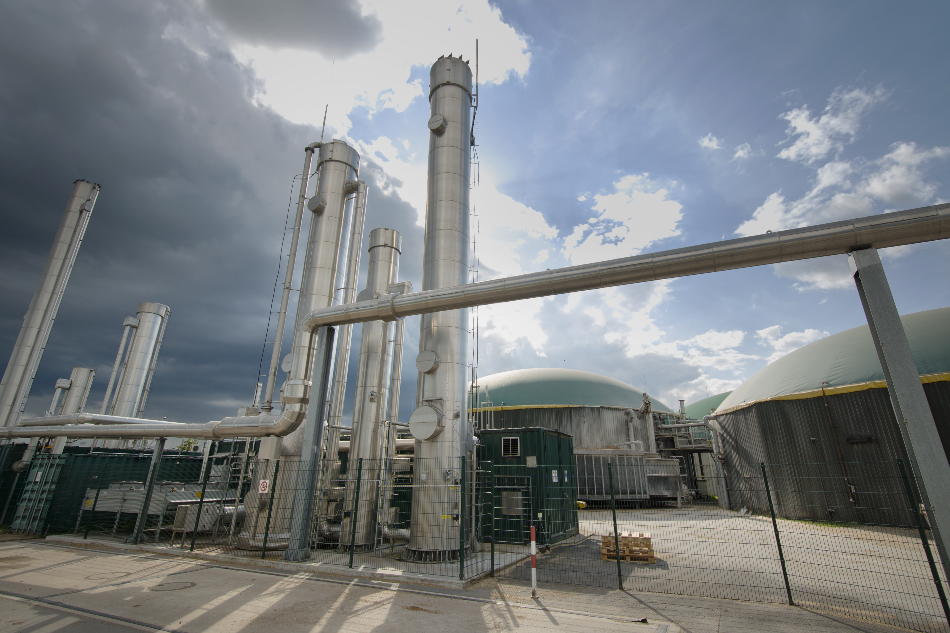Jan 17 2008

Image Credit: Bertold Werkmann/Shutterstock.com
Article updated on 21/01/20 by Ramya Dwivedi
Carbon dioxide and methane generated as a result of the decomposition of solid waste in landfills are known as landfill gas. Both gases are greenhouse gases that lead to global warming.
Methane traps heat in the atmosphere over 20 times more than carbon dioxide (by weight). Methane gas remains in the atmosphere for about 9 to 15 years. Since all landfills generate methane, it makes perfect sense to use this landfill gas for renewable energy generation rather than emitting it into the atmosphere.
‘Landfill Methane Utilization’ is a clean energy practice. Methane is also a primary component of natural gas and an important energy source. Efforts to prevent or utilize methane emissions provide significant economic and environmental benefits. Sustainable uses of methane can be to generate renewable energy.
The Greenhouse Gas Properties of Methane Gas
Methane absorbs terrestrial infrared radiation that would otherwise escape into space, leading to the warming of the atmosphere. The relatively short atmospheric lifetime of methane, coupled with its potency as a greenhouse gas, makes it a candidate for mitigating global warming.
Emission Sources of Methane
Methane is emitted from many natural and human-influenced sources. Methane is created and released into the atmosphere by biological processes that occur in an anaerobic environment. Human-influenced sources include natural gas and petroleum systems, agricultural activities, coal mining, landfills, stationary and mobile combustion, waste-water treatment, and certain industrial process.
The largest source of methane emissions come from the decomposition of waste in landfills, ruminant digestion and manure management associated with domestic livestock, natural gas and oil systems, and coal mining.
Methane emission levels from a source can vary significantly from one country or region to another, depending on many factors such as the climate, industrial and agricultural production, various energy usage, and waste management practices.
For example, moisture and temperature can affect the anaerobic digestion process, which is one of the key biological processes causing methane emissions in both human-related and natural sources. Also, the implementation of technologies to capture and utilize methane from sources such as landfills, coal mines, and manure management systems affect the emission levels from these sources.
Landfill Methane Emission
Methane is generated in landfills and open dumps during the anaerobic decomposition of wastes. The amount of methane generated is dependent on the quantity and moisture content of the waste, and the design and management practices at the site.
Methane emissions from landfills represent a lost opportunity to capture and use a significant energy resource. Landfill gas is created as solid waste decomposes in a landfill. Landfill gas is composed of approximately 50 percent methane, about 50 percent carbon dioxide, and a small amount of non-methane organic compounds.
Turning Landfill Gas into Energy
Instead of allowing landfill gas to escape into the air, it can be captured, converted, and used as an energy source. Landfill gas can be extracted from landfills using a series of wells and a blower/flare or a vacuum system. This system directs the collected gas to a central point where the extracted landfill gas can be processed and treated, depending upon the final use for the gas.
From this point, the extracted landfill gas can be simply flared or used to generate electricity, as a feedstock for chemical processes, to replace fossil fuels in industrial and manufacturing operations, fuel greenhouse operations, or be upgraded to pipeline quality gas.
.jpg)
Figure 1. Landfill Gas System (Image source EPA)
Benefits of Landfill Gas Utilization for Energy
Using landfill gas for energy is a win/win opportunity. Landfill gas emitted from decomposing garbage is a reliable and renewable fuel option that remains largely untapped at many landfills.
Generating energy from landfill gas creates several environmental benefits such as directly reducing the amount of greenhouse gas emitted into the atmosphere. Producing energy using landfill gas avoids the need to use non-renewable resources like coal or oil to produce the same amount of energy.
Downstream benefits of landfill gas utilization for energy include reduced air pollution by offsetting the use of non-renewable resources and enhanced health benefits. This also improves the economy of the community.
Currently, landfill gas modeling, project technology, and partnerships have created regulation and evaluation systems for landfill gas energy development.
References and Further Reading
LFG Energy Project Development Handbook
Benefits of Landfill Gas Energy Projects
Landfill Gas Energy A Guide to Developing and Implementing Greenhouse Gas Reduction Programs